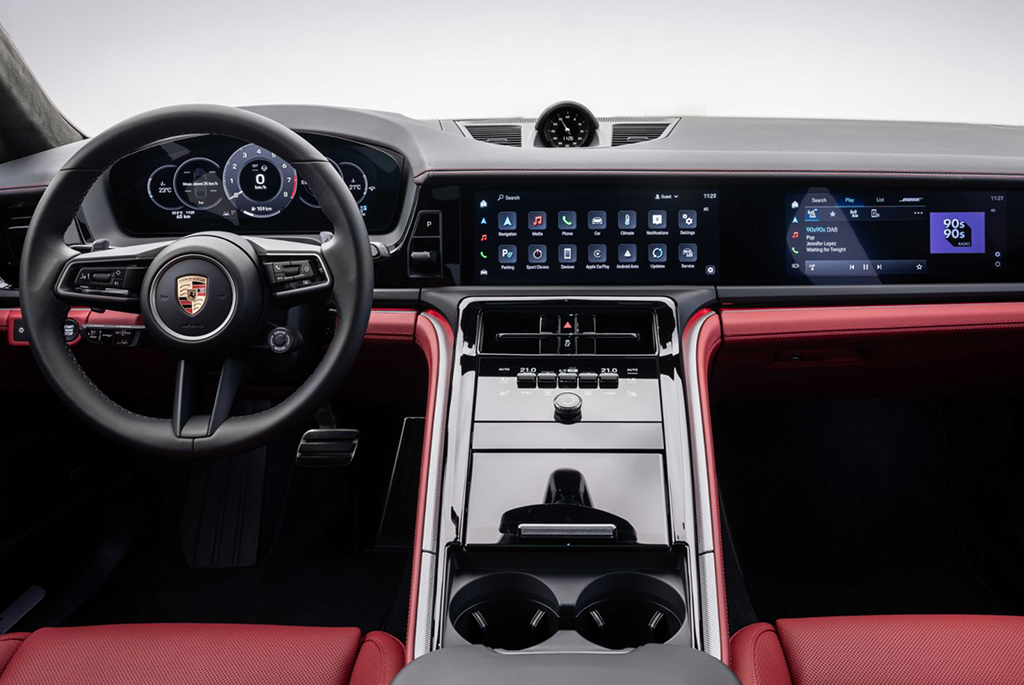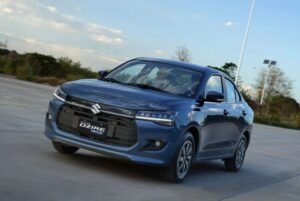
Porsche has given us a glimpse of what to expect from the interior of the third-generation Panamera, which is set to make its global debut on November 24.
The new Panamera’s cabin is marked by a high-tech design, drawing inspiration from the sleek interiors of Porsche’s Cayenne and Taycan models.
It’s evident that Porsche is placing a strong emphasis on advanced technology, with a dashboard featuring a range of screens to offer a glimpse of what the future of driving could look like.
The interior design philosophy of the new Panamera retains its characteristic slab-sided dashboard and a gracefully flowing center console. However, the most significant departure from the previous generation is the inclusion of multiple screens.

The new Panamera boasts a 12.6-inch digital instrument cluster, a 12.3-inch touchscreen for infotainment, and an optional 10.9-inch display for the passenger.
Notably, the passenger’s screen remains discreet and out of the driver’s line of sight to minimize distractions. This screen allows the front passenger to interact with various features, from setting a lap timer to controlling media settings or even indulging in streaming services like YouTube and TikTok.
The traditional analog tachometer, a hallmark of previous Panamera models, has been replaced with a fully digital driver’s display. This digital interface is positioned slightly further back on the dashboard and offers a variety of customizable views, including a classic five-dial setup.
Passengers in the rear are also treated to a centrally located touchscreen that grants them control over media, navigation, and ambient lighting settings.
The center console of the new Panamera has undergone a significant transformation. It features an electrically operated central AC vent and haptic controls with toggle switches for the HVAC system, contributing to a cleaner and more spacious layout.
The gear selector has been simplified to a toggle and is now positioned between the dashboard and the infotainment screen, creating space for two generously sized cup holders and additional storage.
Porsche has also introduced a leather-free upholstery option, combining Race-Tex and Pepita fabric, reflecting a commitment to sustainability.

The new Panamera’s steering wheel has been redesigned and now offers access to a range of driver-centric functions. Drive mode selection, navigation through digital instrument cluster menus, and interaction with the optional head-up display have all been seamlessly integrated into the steering wheel. The update also includes a continuous light strip and improved seat foam materials for enhanced comfort.
Under the hood, the new Panamera will feature a revised range of petrol engines. These powerplants have been equipped with reworked exhaust systems and updated software to meet stringent Euro 7 emissions regulations.
The lineup includes updated versions of the existing twin-turbocharged 2.9-liter V6 and 4.0-liter V8 engines, now featuring 48V mild-hybrid systems. Additionally, the new Panamera is set to introduce an overhauled plug-in hybrid powertrain range, which will be shared with the forthcoming fourth-gen Cayenne SUV.
For the complete details, including technical specifications, we’ll have to wait until the official launch of the new Porsche Panamera on November 24.


